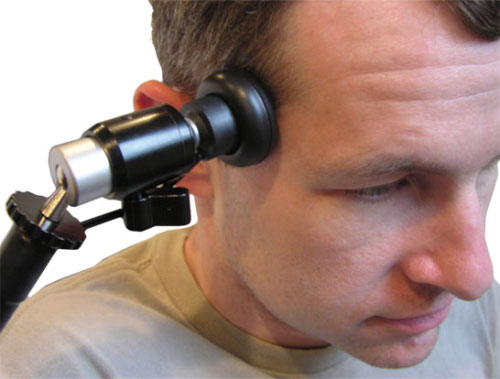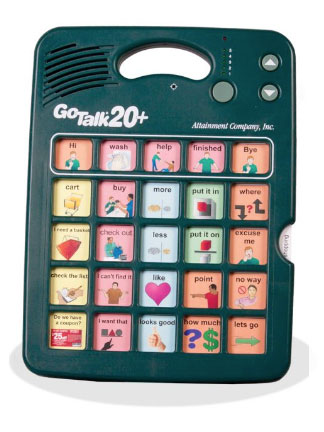May 2024 - Accessibility

Accessibility
Accessibility is defined as the practice of making information, activities and/or environments sensible, meaningful and usable for as many people as possible. People with disabilities face barriers to accessibility in their public life every day. Running an errand, going to the grocery store or making a doctor appointment are activities most of us take for granted, but they are often full of obstacles for people with disabilities. Thankfully, there are laws in place to help address these barriers. The American with Disabilities Act (ADA) was signed into law on July 26, 1990, becoming the first civil rights law passed to protect people with disabilities from discrimination and ensure they have the same access and opportunities as everyone else. The ADA is divided into sections including education, employment, public transportation and public entities, public accommodations and commercial facilities, communications and more. It also covers access to local and state government programs and services.
When addressing accessibility, accommodations may need to be made for those with disabilities to fully participate. For example, if physical access is the concern, then providing a ramp or widening a doorway could create easier access. Other accommodations could include providing signs in braille for the blind, setting up a sensory-friendly environment, or having sign language interpreters and/or captioning for individuals who are deaf or hard of hearing.
In addition to making already existing spaces more accessible through accommodations, the concept of Universal Design (UD) aims to make physical and digital spaces accessible for everyone from the start. Fewer accommodations are needed when spaces are designed to be inclusive from the beginning. Accessibility, accommodations and UD might never be perfect, but they help address barriers and challenges to make sure everyone has the same access and opportunities.
Featured Resources
Browse more featured resources available to borrow from the DRL:
https://vll.cedwvu.org/.Including All Children: Environments That Say "Yes"

Anne C. Haggart Associates, Inc.
One of a ten-module set of training materials produced to enable caregivers to include infants and toddlers with disabilities in their care.
Assistive Technology for People with Disabilities
By: Diane Pedrotty Bryant and Brian R. Bryant
This book includes eight comprehensive chapters that focus on devices and software to enhance the lives and promote the independence of people with disabilities. Featured devices and software will help you understand how areas such as mobility, communication, education, independent living, and access to information media affect learning and living. You will also gain a great understanding of the foundational and historical perspectives of AT, assessment, universal design, and the ADAPT framework, which is a tool to help educators make decisions about appropriate AT, student needs and the demands of the environment. Developed from the authors' years of experience teaching.
Featured Technology
Browse featured technology to borrow from the DRL: https://vll.cedwvu.org/.
Head Switch

Ideal for the user who isn't able to activate a switch manually. This mountable switch can be activated with light pressure and is also maneuverable with pressure from the head, knee, elbow or another body part.
Wheelchair Ramp - 3'
The innovative EZ-Access suitcase wheelchair ramp provides safe access into vehicles, upstairs or over curbs. The convenient and portable suitcase style design gives you quick accessibility on the go with integrated caring handles. The bottom transition plates adjust to accommodate uneven terrains. Support up to 800 lbs."30" wide.
GoTalk 20+ Speech Communication

This easy to use, lightweight and rugged picture communicator has a 100-message capacity which provides great sound and volume control. Features easy sequential recording, an option for whole level erasing and built-in overlay storage.
Navigation
What makes a space accessible?
There are many ways to make a space accessible. Participation and involvement of the users of that space is key. A public space or environment that is physically accessible to a wheelchair user may not be accessible to someone who is deaf or blind. Ensuring accessibility and inclusion can provide advantages for everyone. When a space, event or product is designed to be accessible and inclusive it can reach a wider audience and provide higher overall customer satisfaction.
Ways to make an event or space more inclusive:
- Understand your users: Include the users and disability advocates or groups in planning spaces, events and products. Consult with them on best practices. Consider visible disabilities as well as invisible disabilities such as mental health and cognitive impairments. \
- Apply the ADA accessibility standards: Check online government databases for guidelines and strategies on accessibility. Make checklists where you may need to address accommodations.
- Embrace inclusion and diversity: Create a culture of inclusion that is welcoming for everyone.
- Always learn and improve: Learn about how to accommodate those with disabilities. Check online and with local disability agencies and universities. Learn about assistive technology and adaptive equipment like ramps, hearing loops and amplification systems, captioning and screen readers.
- Educate and advocate: Educate yourself and others in your organization and business on accessibility. Research and learn about Universal Design, sensory-friendly spaces, and how to provide and make different accommodations for unique needs. Learn about diverse cultures and how to be more inclusive.
- Enjoy and celebrate: Take time to celebrate inclusion and diversity in your events with organizations, businesses, products and public spaces.
Featured West Virginia Resources
- Wonders Within Reach: Wheelchair Accessible Greenbrier Valley WV - This family-run website features travel information for people with disabilities. In this article they discuss the Greenbrier Valley in West Virginia, the famous Greenbrier Resort and the Schoolhouse Hotel. The Schoolhouse Hotel is the world’s first fully accessible hotel. They discuss accessible transportation and share exclusive deals on sites like museums, restaurants, and shopping for travel to other states.
- WVU CED Accessible Activities and Recreation Guide to WV: This county-by-county guide includes accessible locations where everyone including children, older adults and individuals with disabilities can have fun.
- WV DNR Disability Fishing, Hunting, Trapping Locations: This site provides a list of fishing, hunting and trapping locations and regulations for children and people with disabilities.
- Steppingstones of WV: This is a non-profit organization that provides year-round recreation for children and adults with disabilities. Their goal is to help people with disabilities achieve their maximum level of independence through innovative year-round recreation and personal development programs.
Child's Champion:
Tina Crook
Tina is the lead Parent Network Specialist for the Family to Family and Paths for Parents (F2F/P4P) programs at the WVU Center for Excellence in Disabilities. Tina is a certified Positive Parenting Program (Triple P) Practitioner and a member of the Traumatic Brain Injury (TBI) Advisory Board. Triple P is an online webinar series given three times a year to parents and caregivers of children with disabilities. She provides parent educational seminars that help parents learn to advocate for their child, provides IEP assistance and offers parental leadership opportunities.
Tina’s focus for the last ten years has been to help children with special healthcare needs and their families. She provides resources, information and support and facilitates the Circle of Parents support groups. Those support groups are a space where parents can connect with other parents and share the challenges and successes of raising a child with special healthcare needs.
Tina was inspired to help children and their families in West Virginia because she knows what it is like to have a child with a disability. Tina’s son was left with permanent frontal lobe brain damage after he contracted a virus called HSV1 Encephalitis when he was 13 years old. Tina learned how to navigate the disability and educational world for her son on her own. She said, “I learned what it was like to feel all alone even when other people surrounded you. I felt hopeless and scared.” Tina persevered and she made sure her son was provided with everything he needed to recover and improve his quality of life. This is where Tina’s journey in helping other families began. She knew other families may be feeling the same way she felt during those challenging times, and she wanted to connect them to resources that could help improve their situations.
Tina knows how important it is to let families know they are not alone on their journey. Connecting families with resources they may not have known were available, or seeing a child receive school accommodations is by far the most rewarding accomplishment in her role. Tina believes that her greatest impact on society is raising four competent, confident children and being able to help improve the lives of families that have children with special healthcare needs, including her own child. Tina’s goals for the next 5-10 years are to continue helping West Virginia families and to learn as much as she can so she can continue to grow in her role.
References:
Introduction to The American with Disabilities Act: ADA.gov (https://www.ada.gov/topics/intro-to-ada/) Accessed 3/7/2024
Disability & Health Resources for Facilitating Inclusion and Overcoming Barriers-CDC.gov: (https://www.cdc.gov/ncbddd/disabilityandhealth/disability-resources.html) Accessed 3/6/2024.
Inclusion and Accessibility: (https://youth.gov/youth-topics/inclusion-and-accessibility) Accessed 3/7/2024.
Event Planning Accessibility Tips and Best Practices: (https://www.cvent.com/en/blog/events/event-planning-accessibility-tips-and-best-practices)
Disability and Health Inclusion Strategies: (https://www.cdc.gov/ncbddd/disabilityandhealth/disability-inclusion.html) Accessed 3/7/2024.
